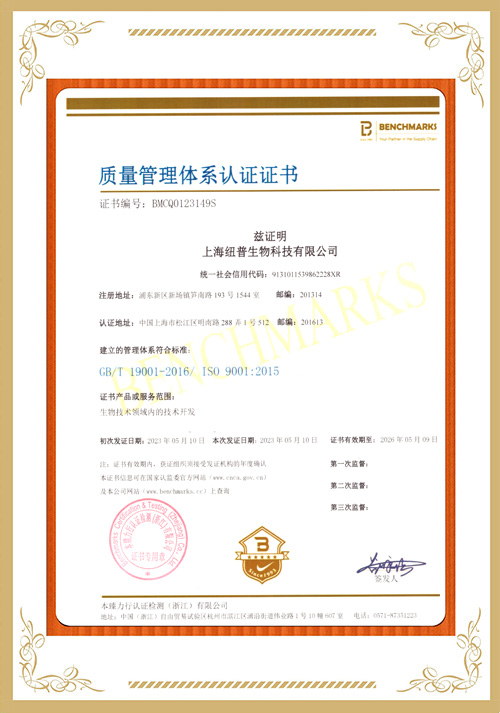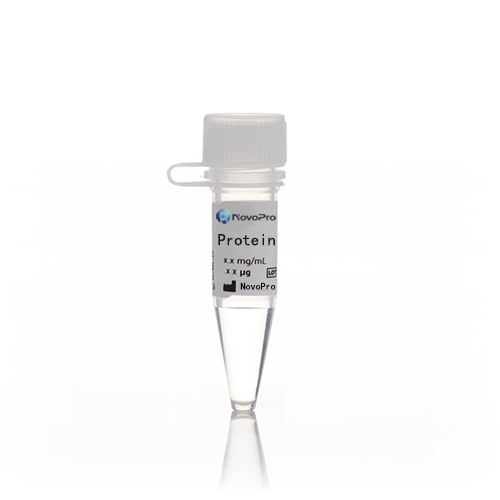重组小鼠SIRP-BETA蛋白
- 蛋白种属:小鼠
- 表达宿主:人胚胎肾细胞(HEK293)
- Unitprot ID:Q6F5F0
产品详情
-
产品名称
重组小鼠SIRP-BETA蛋白
-
蛋白种属
小鼠
-
表达宿主
人胚胎肾细胞(HEK293)
-
Unitprot ID
-
蛋白序列
Met 1 - Lys 363
-
克隆构建
A DNA sequence encoding the mouse SIRPB1A (BAD26610.1) (Met 1-Lys 363) was expressed, with a C-terminal polyhistidine tag.
-
蛋白纯度
> 98 % as determined by SDS-PAGE
-
分子量
The secreted recombinant mouse SIRPB1A comprises 348 amino acids and has a calculated molecular mass of 39.1 kDa. As a result of glycosylation, the apparent molecular mass of the recombinant protein is approximately 55-60 kDa in SDS-PAGE under reducing conditions.
-
蛋白别名
SIRPB1A; SIRP-BETA; 9930027N05RIK; SIRPB; SIRPB1
-
蛋白全名
SIRP-beta B-type
-
蛋白描述
SIRPB1A (Signal-regulatory protein beta 1A), also known as SIRP beta 1, belongs to signal-regulatory-protein (SIRP) family, and immunoglobulin superfamily. Signal-regulatory proteins (SIRPs) are cell-surface glycoproteins expressed on myeloid and neural cells that have been shown to recruit SH2 domain-containing protein phosphatase 1 (SHP-1) and SHP-2 and to regulate receptor tyrosine kinase-coupled signaling. SIRP are classified as SIRP alpha molecules, containing a 110- to 113-amino acid long, or SIRP beta molecules, with a 5-amino acid long intracytoplasmic domain. SIRP beta 1 is a new DAP12-associated receptor involved in the activation of myeloid cells, which contains a short cytoplasmic domain that lacks sequence motifs capable of recruiting SHP-1 and SHP-2. SIRP beta 1. SIRP beta 1 acts as an activating isoform of SIRP alpha molecules, confirming the co-existence of inhibitory ITIM-bearing molecules, recruiting SHP-1 and SHP-2 protein tyrosine phosphatases, and activating counterparts, whose engagement couples to protein tyrosine kinases via ITAM-bearing molecules.
-
发货形式
Lyophilized from sterile PBS, pH 7.4
1. 5 % trehalose and mannitol are added as protectants before lyophilization.
2. Please contact us for any concerns or special requirements.
-
内毒素
< 1.0 EU per μg of the protein as determined by the LAL method
-
保存条件
Store it under sterile conditions at -20℃ to -80℃. It is recommended that the protein be aliquoted for optimal storage. Avoid repeated freeze-thaw cycles.
重组蛋白定制服务:
纽普生物(NovoPro)提供大肠杆菌、哺乳细胞、昆虫细胞和酵母细胞重组蛋白定制服务
声明:本公司出售产品只能用于科研目的,不得用于诊断或者治疗!


